The Good Life
What can we learn from the history of utopianism?
What Can We Learn From the History of Utopianism?
In Everyday Utopias, Kristen Ghodsee looks for a usable past in order to explore the possibilities of a utopian future.
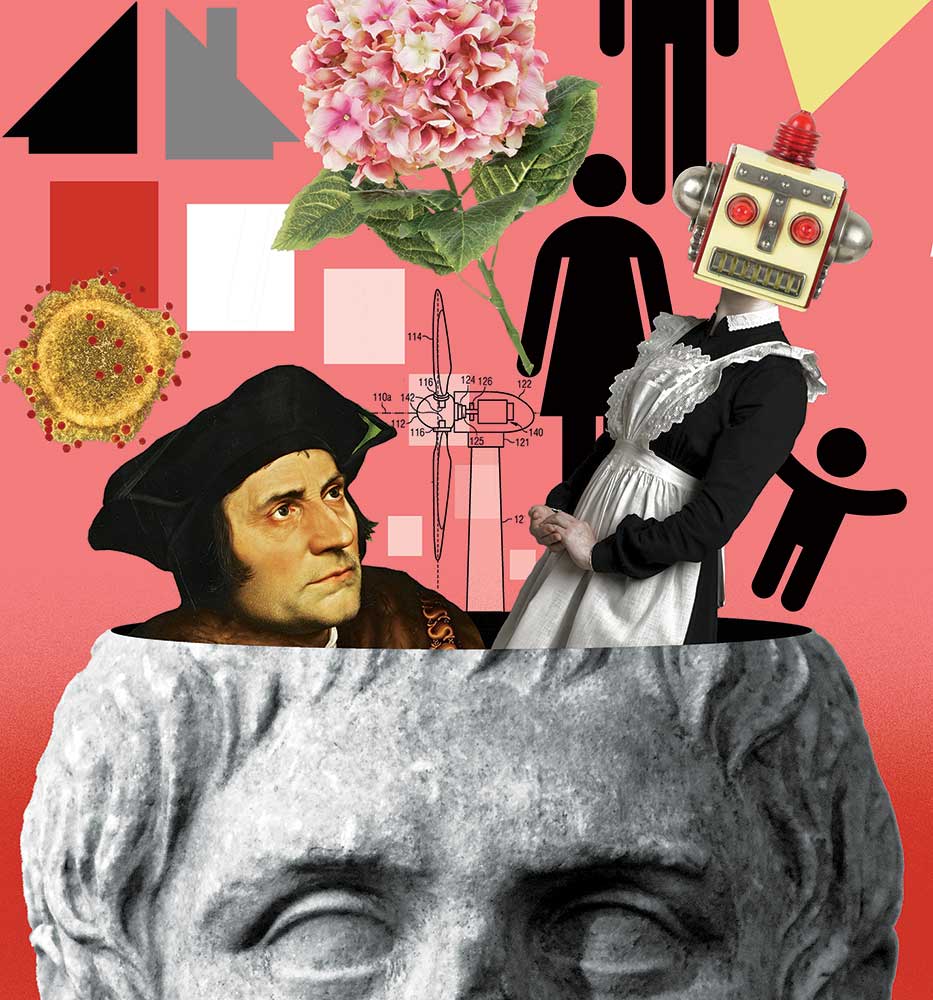
Illustration by Tim Robinson.
In the desert of Saudi Arabia, between Jordan and the Red Sea, Crown Prince Mohammed bin Salman is building a utopian eco-city called the Line, a cornerstone of the kingdom’s Vision 2030 plan to reduce its economic dependence on oil. The Line will be built along a 100-mile strip dedicated to carbon- and car-free living, powered by wind and solar and provided with fresh water by desalination. It will be made up of self-sufficient superblocks, each square with its own schools and shops. There are plans for vertical farming in greenhouses, high-speed trains, millions of trees, robot maids, and an autonomous legal system designed by investors.
Books in review
Everyday Utopia: What 2,000 Years of Wild Experiments Can Teach Us About the Good Life
Buy this bookI learned about the Line from a friend whose brother-in-law, an ornithologist, had been hired by the mega-development project ostensibly to make sure that endangered birds wouldn’t be chopped up by the wind turbines that would help power the city or be killed by flying into its mirrored skyscrapers. This was early in the summer of 2021, and my friend and I were bird-watching on the trails of Inwood Hill Park in Upper Manhattan. The topic of our conversation seemed natural enough: By that point in the pandemic, we’d been isolated with our nuclear family units for more than a year, and so the talk of a utopian eco-city with robot maids—or, really, of being anywhere but where we were—was, at the least, compelling.
My friend, a working mother who had been clocking in 9-to-5 at an office in Midtown Manhattan for two decades, talked about her resentment that there’d been no flexibility in her schedule until Covid-19 hit. Now there was time in her day for leisurely walks like this, because she was working remotely and no longer had to commute. I countered with my fears that my two young sons, deprived of the structure of in-person school, playdates with friends, and the meaningful influence of adults other than me and their father, might be suffering from cognitive deficits. The problem of childcare, for both of us, had been pulverizing—whether before Covid, in my friend’s case, or during it, for me.
The Line didn’t actually sound like a utopia. As I later learned, critics of the project charged that the city was a “greenwashing” ploy by the crown prince to distract from the reality of the country’s increased oil production. (The Saudi government has denied this.) It would presumably cater only to the uber-rich and the people who serve them; the 20,000 indigenous Bedouin Howeitat people who lived in the desert between Jordan and the Red Sea were being forcibly displaced from the land—and at least one of them had been killed—to make way for the dream city. But, bone-tired from the demands of our domestic duties, my friend and I wondered: What might a real utopia look like?
In her refreshingly optimistic and accessible new book, Everyday Utopia, Kristen R. Ghodsee, a professor of Russian and Eastern European studies at the University of Pennsylvania (and a die-hard Star Trek fan), looks to the usable past to explore utopian visions for our future. Specifically, she presents alternative ways of building our homes, raising our children, educating our youth, sharing our property, and defining what counts as family. Ghodsee argues that we can’t approach the creation of a good or just society without real changes for women—changes that would relieve the pressures of work in the home to the benefit of all.
Charting more than 2,000 years of utopian experiments, Ghodsee points out that throughout history, periods of instability—such as the one we’re living in now—have given rise to utopian dreaming. “For millennia, new ways of organizing social relations have emerged when philosophers, theologians, reformers, writers, and other visionaries imagine them elsewhere, in some idealized world that serves as a mirror to reflect the deficiencies of the accepted state of things,” she writes.
Plato’s Republic, with its wide-reaching influence on utopian thought, was written in the wake of the Peloponnesian War, which rocked the ancient Greek world and sparked the end of its so-called golden age. Centuries after Plato, Thomas More wrote his 1516 treatise Utopia within 30 years of the journeys by Columbus and Vespucci, whose “discoveries” provoked debates about the dominance of old institutions, such as the Roman Catholic Church, and inspired dreams of creating new ones. Our own moment, too, reveals how in the midst of a crisis we turn to utopian thinking. As Arundhati Roy asserted, “The pandemic is a portal.” Like previous periods of social and economic upheaval, it has “forced humans to break with the past and imagine their world anew.”
In these periods of turmoil and turbulent change, political reform and even political revolution often appear doomed to fail unless the structures within our private spheres, not just those of our public lives, are rethought. Since so much of our society revolves around the nuclear family unit, Ghodsee argues, this rethinking of private life must begin with remaking the structure and organization of our families. The pandemic, she notes, was an inflection point in an already strained social system that often displaces the work of the welfare state onto parents, and in particular onto women, who do the bulk of care work and emotional labor in contemporary capitalist society. I’m reminded of the words of Empress Natika, a Rasta woman I met in Ghana when I was studying utopian communities in the African diaspora, who also noted that real change begins in the home: “My revolution is small-small.”
As a scholar of global women’s movements, Ghodsee has made a career of examining the ways we might “free women from their traditional roles as unpaid caregivers and…men from [their] expected duties as financial providers.” The premise of one of her previous books, Why Women Have Better Sex Under Socialism, is that socialist policies improve women’s lives by expanding childcare, education, elder care, healthcare, and other social programs. Ghodsee argued that fortifying these safety nets would then “improve the quality of life for everyone.”
Everyday Utopia extends naturally from these arguments, but rather than examine how the state and public institutions might lighten the burden of care in order to free us from exhaustion, Ghodsee here argues that it is time to consider alternative home structures as well. After all, private housing is built on the presumption that someone, probably a woman, will do a disproportionate amount of the cooking, cleaning, and caregiving, a model that’s been outdated for so long we may as well call it past its expiration point—that is, rotten. Many millennials will never be able to afford a house. Even the US surgeon general has raised the alarm about a national “epidemic of loneliness.” Yet I prefer Ghodsee’s view that the portal is still open over the outlook of an acquaintance who recently said, “Every crisis is a crisis unused.”
Visions of undoing patriarchal notions of the family have appeared repeatedly over the millennia in a range of cultural contexts. In the sixth century bce, Ghodsee tells us, the Greek philosopher Pythagoras founded a commune (sometimes described as a cult) where men and women shared property, lived as equals, and devoted their time to intellectual pursuits. Today, a group of women and children in Colombia who are survivors of domestic violence or displacement by civil war live in an intergenerational, matriarchal eco-village called Nashira. They build their own houses out of recycled materials and cooperatively grow their own food.
Focusing especially on those utopian experiments that treated women as equals and prioritized communal child-rearing and shared property, Ghodsee reviews the long history of non-consanguineous groups, whether religious or secular, living together. (At times, one wishes she had also looked at their limits and flaws.) She touches on ancient Buddhist and medieval Christian monasteries; contemporary cohousing communities in Maine and Denmark; ideas imagined and put into practice over time by Karl Marx, the French writer Flora Tristan, and the Russian bureaucrat Alexandra Kollontai; the Hutterite, Shaker, and Bruderhof Christian enclaves; the kibbutzim in Israel; and many more.
Popular
“swipe left below to view more authors”Swipe →Take Thomas Müntzer, a German Reformation theologian. Along with Thomas More, Müntzer inspired many later generations of utopian socialist thinkers, especially those who rejected the idea of private property. Charles Fourier argued that individual homes bred alienation and isolation that made people selfish and therefore proposed a massive secular community designed for 1,620 people who would share domestic labor. That vision has contemporary counterparts: The Danish feminist Bodil Graae founded a cohousing initiative, now called Sættedammen, in the 1970s, which Ghodsee reports is thought to be the “world’s first modern cohousing community.”
As she walks us through these and other examples of utopian thought and practice, Ghodsee asks several provocative questions: Is the nuclear family a mistake? Why should care be restricted to biological kin? And in a section titled “Schooling in Capitalist America”: Is education a public good or a private investment?
Ghodsee examines utopian educational reform in 1960s Tanzania, where the then–newly elected president, Julius Nyerere, argued for a curricular model that combined labor and study in self-sufficient communities. Every school would also be a farm that provided food to nearby residents. There’s a progressive school in New York that embodies Nyerere’s dream, called Manhattan Country School, with access to a 200-acre farm upstate. Yet the full tuition for it runs more than $50,000 a year. Even Nashira in Colombia wouldn’t have been possible without the donation of land by a private foundation.
Ghodsee’s book builds up to her ultimate and most radical anti-institutionalist proposal: that the modern monogamous nuclear family should be redesigned. She argues that insular family units should be replaced with communal living situations wherein care, housework, and resources would be shared among relatives, friends, and neighbors. She knows that questioning the family is still something of a third rail in the United States and other Western countries (even though the queer community has been modeling chosen family over biological bonds for quite some time now, and practices that challenge traditional families abound—polyamory, cohabitation, BirthStrike, cooperative apartment buildings, and so on). But she convincingly argues that the nuclear family is part and parcel of individualistic societies troubled by extreme wealth inequality and frayed social safety nets because it prioritizes a small, insular group over neighbors and the larger community. It is within the nuclear family unit that patriarchy reasserts itself, that capitalism reasserts itself, that property is passed down and assets are inherited, maintaining class inequality and driving competition.
For Ghodsee, therefore, we must fundamentally rethink the organization of our intimate lives. She notes that Plato said more or less the same thing in The Republic—the oikos (meaning “family” or “house”), he argued, undermined social cooperation. But she also points out the utopian behaviors that many readers might already recognize and amplify in their daily lives: Sharing more means consuming less; marriage need not determine the experience and organization of parenthood; nourishing friendships and expanding chosen family will multiply affection and care; swapping childcare with other parents will free up time; letting the kids spend more time among relatives and friends further spreads nurture; strangers can become kin; social dreaming is an act of radical hope.
Not all of us can run off and join a kibbutz, but we can all get to know our neighbors. The isolating crisis of the pandemic forced many of us to create new social arrangements: mutual aid, Buy Nothing groups, remote work, text chains for checking in with friends, outdoor parenting pods where we scheduled regular visits with other families in public parks. Ghodsee would describe these engagements in the realm of the commons as everyday utopias: practices that widen the aperture of care.
There is good reason to think twice about how utopian communities are often formed; about how, in the past, they have effectively displaced and/or excluded other peoples; and about why so many past utopias have failed to persist. But I agree with Ghodsee’s encouragement to enact utopia in the everyday. As Oscar Wilde put it: “A map of the world that does not include utopia is not worth even glancing at.”
Recently, my elderly neighbor Eve asked me to help with her garden, which was growing harder for her to maintain because of bad arthritis in her knees. The box bushes in front of her house were dying or dead. We figured out who in the neighborhood to hire to pull them out. We talked about what we might put there instead, how we might heal the soil with my compost to make way for something new. I offered her a cutting of my mother’s hydrangea with three lacecap blooms the pollinators would adore. The plant was small-small, but with devotion, we could make it grow.
Utopia: It’s not some futuristic city in the desert. Maybe it’s simpler than that; it can start right in front of us.
More from The Nation
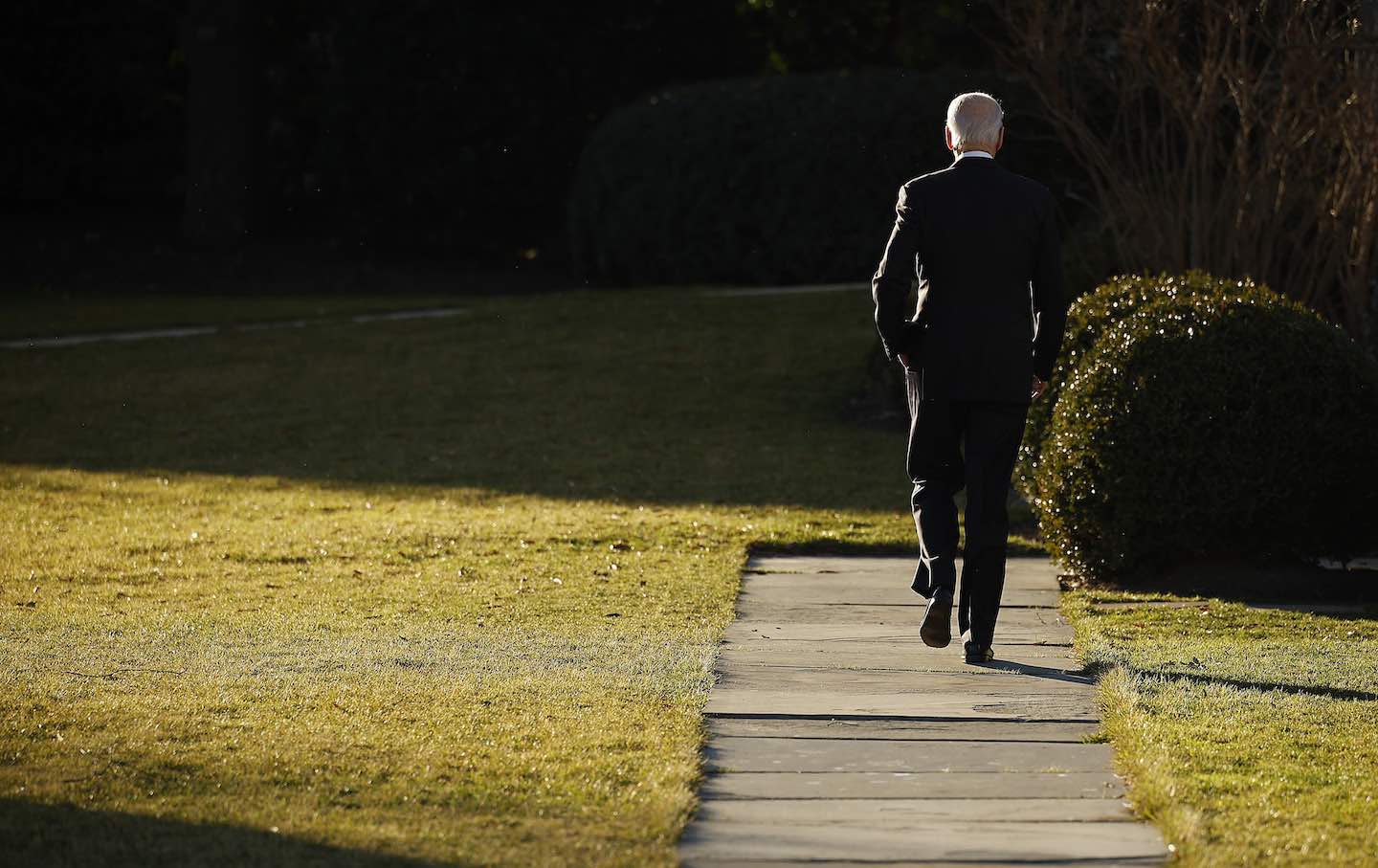
President Biden Should Issue a Blanket Pardon of Undocumented Immigrants President Biden Should Issue a Blanket Pardon of Undocumented Immigrants
Protecting Trump’s enemies from prosecution just reinforces the idea of politics as retribution. Instead, Democrats should be defending his most vulnerable targets.
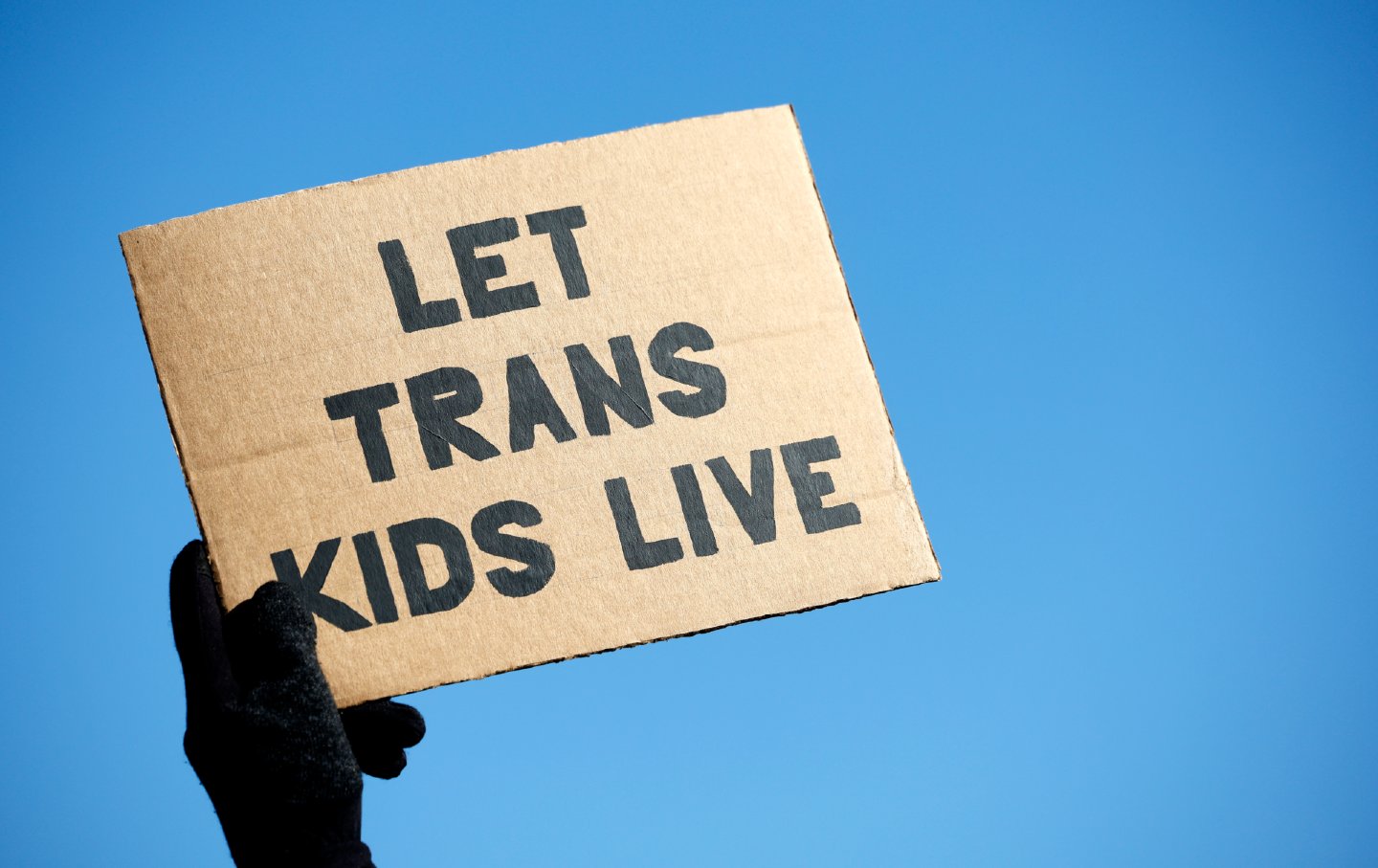
The Supreme Court’s Hearing on Trans Rights Was Bigotry Masquerading as Law The Supreme Court’s Hearing on Trans Rights Was Bigotry Masquerading as Law
The conservative majority spent much of the oral arguments for US v. Skrmetti trying to erase the trans community.

Will There Be a Bird Flu Epidemic Under Trump? Will There Be a Bird Flu Epidemic Under Trump?
H5N1 currently poses a real threat for human transmission. Meanwhile, Trump’s picks for public health roles don’t bode well for vaccination.
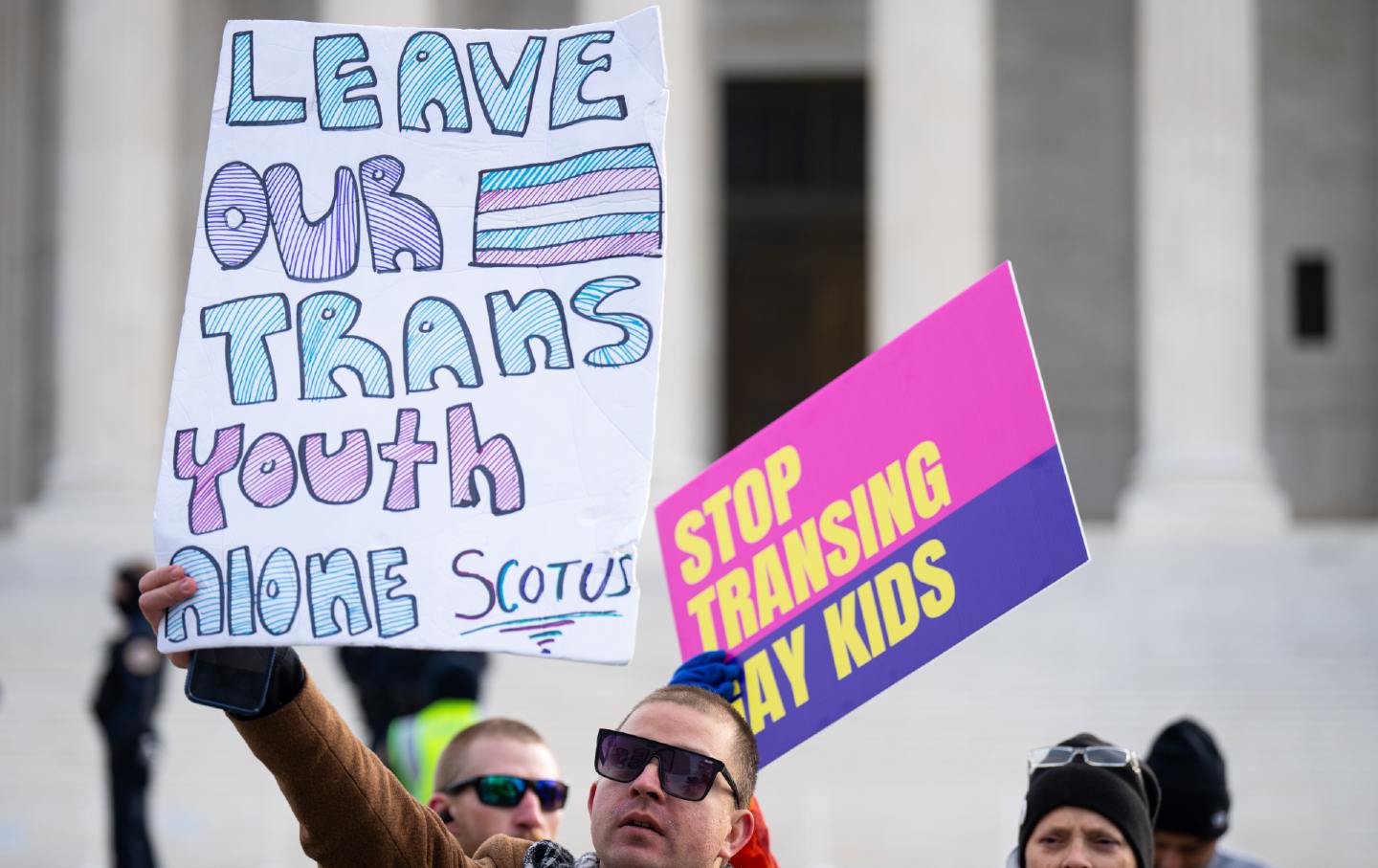
Trans Medicine’s “Merchants of Doubt” Trans Medicine’s “Merchants of Doubt”
There is plenty of uncertainty involved in gender-affirming care—as in most aspects of medicine. But the groups behind the Tennessee ban aren’t driven by science—or patient care.

Donald Trump’s Second Administration Will Be As Women-Hating as Ever Donald Trump’s Second Administration Will Be As Women-Hating as Ever
"Your body, my choice" is only the beginning.
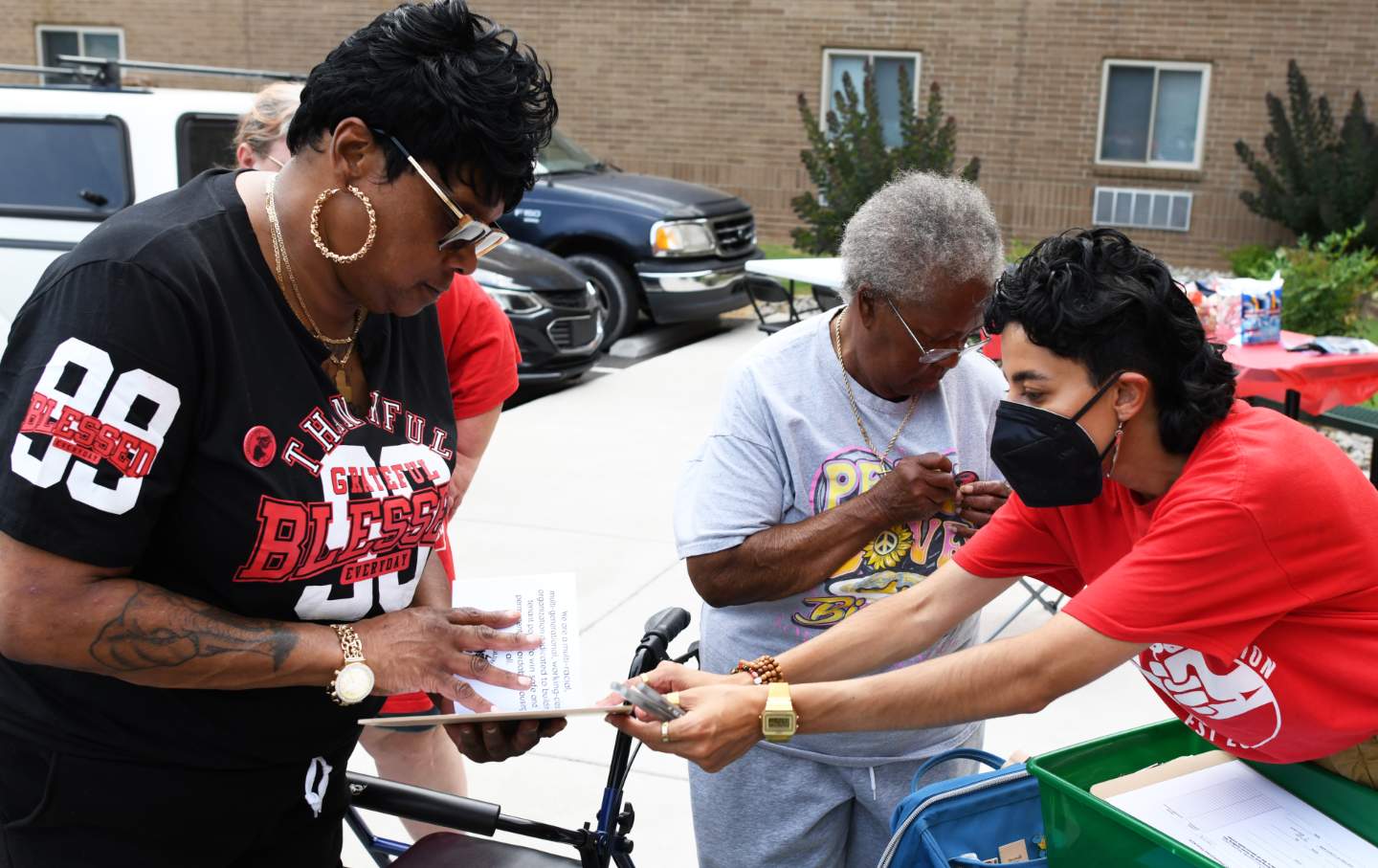
In the US, Tenants Are Usually on Their Own. Can a New National Tenant Union Change That? In the US, Tenants Are Usually on Their Own. Can a New National Tenant Union Change That?
The Tenant Union Federation is fostering a wave of tenant leaders who have been pushed to the margins—many of them elderly, disabled, low-income—as they aim to transform renters i...


